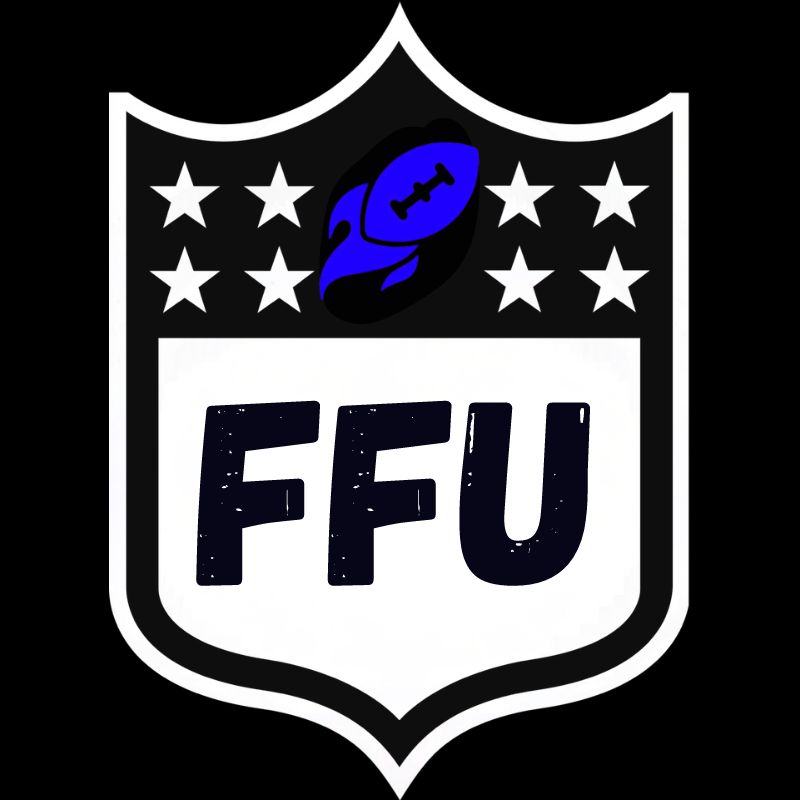For the general public, a standard fantasy football league suffices. If you’re reading this article, you may have grown weary of normal leagues and would like to try something new. Crash Course, a Fantasy Football Universe series, delves into unique formats. So, let’s start with Tight & Bright: Unleashing Tight End Premium Prowess.

How Does it Work?
There isn’t one definitive way to implement tight-end premium, here is how I typically do it. My preferred scoring settings are 0.5 points per reception with 0.5 points per first down, to implement tight end premium in those leagues I double both of those settings and make the tight end points worth one full point for a reception and one full point for a first down, while still leaving the other positions at 0.5 points.
This effectively makes tight-end receiving worth twice as much as any other position. In addition to making tight ends score double, it drives the value of tight ends through the roof since the top tier of tight ends is now a precious resource.
How is it different?
Nothing else in this league is different except tight-end scoring and value. As I stated before, this is a major change that sends tight-end value through the roof, so draft accordingly.
In a tight-end premium league, you will typically see at least two tight ends go off the board before the end of round two, sometimes as many as four. There will typically be two major runs on tight ends, one will start when the first tight end goes off the board and will run until the top tier is drafted, then there may be a round or two without a tight end but once the first player in the next tier is drafted there will be an arms race to lock up a top 10 tight end before they are all gone.
How does the Draft work?
The startup draft can be done in three ways:
- Veterans & Rookies Together: one big draft with all players available for selection. These are typically 20-30 rounds in length.
- Veteran & Rookie Separated: this would include one startup drafted with veterans only and would typically last 20-25 rounds and would then be a supplemental rookie draft afterward that lasts five rounds and features only rookies.
- Veteran & rookie Picks: This is a mix of Option 1 & 2. It’s a 20-25 round startup draft that includes all the veterans. The only difference is that rookie picks can be drafted in the main draft as Kickers or DST players. From there, the rookie picks that were selected are converted to a rookie draft order, and a regular supplemental rookie draft is held.
A look at the Rosters
Rosters are open to league preference and are dependent on format and skill level. The majority of my leagues use tight end premium and range from redraft leagues with only 15 roster spots, to IDP dynasty leagues that have 45 roster spots.
The only thing that is universally true across all tight-end premium leagues is that most teams will carry extra tight ends. This is even more true in dynasties where most tight ends on a roster are owned in hopes of fantasy managers stumbling onto the next breakout star, which can be difficult considering the tight end position is notorious for having the latest breakout age with players often taking multiple years to become fantasy relevant.
How does the Waiver Wire work?
As always, the waiver wire settings are a matter of personal preference and vary depending on the league. As I stated above, tight ends will be a precious resource so you shouldn’t expect to have many options available on the waiver wire.
In most cases, the only tight ends on the waiver wire will be the ones who are buried on the depth chart or ones who have little upside.
How the scoring works
Again, this is subject to personal preference, I choose to double the reception and first down scoring, but some leagues go even further and triple it. It’s all a matter of what you are most comfortable with.
Just remember, the more you boost the tight end scoring, the earlier they will go in the draft, in some cases the TE1 can creep into the 1.01 draft slot as we saw with Travis Kelce.
The Consensus Strategy
- Great or Late: This strategy was created by Adam Aizer of CBS Sports. It essentially means that if you can’t draft one of the early difference-making tight ends, you simply punt the position and wait until the double-digit rounds to take multiple tight ends in hopes of finding one breakout star.
- Draft Depth: This strategy is more important if you take the late approach from the above point. If you drafted an elite tight end, there isn’t much sense in using draft capital on a player you are never going to play over your star. If you didn’t draft an elite tight end, it makes sense to stockpile as many late dart throws as possible in hopes one will hit.
My Strategy
- Bully TE: This is by far my favorite tight-end premium strategy. Most managers get set in their ways and draft only one tight end, often later in the draft. In addition to drafting one of the top-tier tight ends early in the draft, I will often draft a second and even third tight end from the second tier if they fall. Many times, other managers will choose to draft wide receivers and running backs who are better than the tight ends on the board as they forget about how much the tight ends get boosted in this format. While the TE10 may not sound sexy in general, they can often outscore a top-20 receiver.
- Second in Targets: This requires some research. Simply go through each team’s depth chart and try to rank who you think will be first, second, and third on each team in targets. If the first or second option on any team is a tight end, you should consider them to have a monster upside. In many cases, these players are the Mark Andrews’ of the world and are highly sought after but in the case of Trey McBride, it was easy to see a pathway to targets before he exploded with fantasy production.
In Closing
This format is a case of why you must read your scoring setting before drafting instead of just blindly following ADP or a site’s rankings. These rankings sets do not factor in your specific league settings and will often have tight ends buried behind players they will easily outscore with the scoring bonus.
You should be looking tight end early and often. I’ve even seen managers go as far as to draft four tight ends in the first six rounds of a league like Scott Fish Bowl. This format is the equivalent of Superflex but for tight ends.
Don’t forget to check out the rest of the Crash Course Series.

